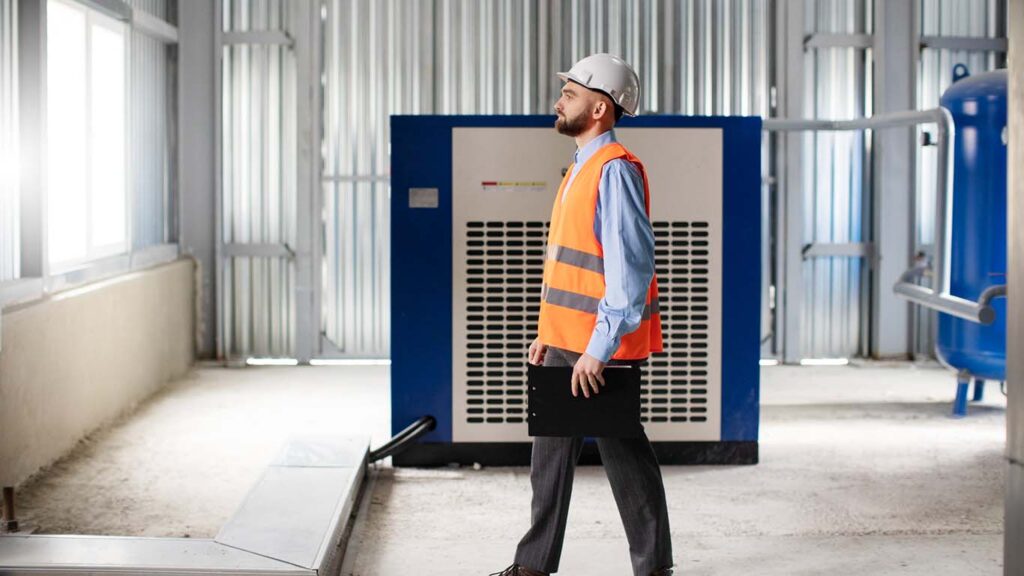Technology for cooling is changing rapidly. Another potential sector that will require energy-efficient, environmentally friendly and cost-effective cooling systems is the commercial sector.
Increasing global temperatures alongside more stringent regulations are driving innovation. Get high quality air and pay less for your power. So, they use advanced cooling systems to do this. The evolution in this industry ranges from smart cooling to new refrigerants.
These advances are making cooling smarter, speedier, and more sustainable. It enables businesses to decrease carbon footprint and increase efficiency. Here’s a look at the latest advancements in advance cooling system.
All Of This Leads To The Need For Smart Cooling Systems
AI is revolutionizing the cooling world. Now, AI is used to optimize performance in smart cooling systems. Real-time sensors monitor temperature, humidity, and airflow. The AI evaluates the data, changes coolant strategies accordingly. This minimizes energy waste and keeps optimal conditions indoors.
Such systems also forecast maintenance requirements. AI identifies minor issues early before they escalate into crises. This avoids breakdowns and expensive repairs. Enterprise saves money and machinery enjoys uninterrupted cooling. Smart cooling also responds to level of occupancy. The system fires up less cooling if a space is empty. It readjusts when people come in.
One more breakthrough is cloud-based AI cooling. It links several buildings to a central system. This allows businesses to oversee and manage cooling remotely. The technology is revolutionizing energy management. This makes cooling systems more efficient, responsive, and economical.
Revolutionizing Refrigeration: A Sustainable Path Forward
In cooling systems, refrigerants are crucial. But many traditional refrigerants are bad for the environment. They are also contributors to global warming and ozone depletion. The newest refrigerants take care of this issue. They’re also more efficient and environmentally friendly.”
This shift is being led by Hydrofluoroolefins (HFOs). They have lower global warming potential (GWP). They break down rapidly in the atmosphere, unlike older refrigerants. Carbon dioxide (CO₂) is another growing trend. It’s all-natural, safe, and readily available. There are other green substitutes like ammonia and propane. They have long been used in industrial cooling. Now commercial buildings are getting in on the act.
The new refrigerants are more energy-efficient. They store and release heat better. This lowers power consumption, and thereby electricity costs. Transitioning is now being encouraged by many governments.
Magnetic Cooling: The Next Big Champion
Magnetic cooling is a striking innovation. It operates free from toxic refrigerants. Instead, it employs a process known as the magnetocaloric effect. Some materials get hot when placed in a magnetic field. When the field is switched off, they cool down. This creates a cool, efficient cycle.
Several benefits of this technology exist. It saves energy and is harmless to the environment. It avoids the use of chemical refrigerants. Magnetic cooling systems operate silently as well. They vibrate less and last longer. This helps cut down maintenance costs and increases reliability.
Commercial applications have already been tested with magnetic cooling by companies. Supermarkets, restaurants and data centers might benefit most. These locations require constant, effective cooling.
High-Performance Needs Require Liquid Cooling
Air cooling has limits. Liquid cooling, on the other hand, is a more effective answer in high-demand scenarios. It is already expanding in data centers and industrial facilities. Now, it’s being embraced by commercial buildings.
Liquid cooling is better at transferring heat than air. It uses a coolant running in pipes that absorbs heat. The system then expels the heat outside. This process uses less energy, keeping equipment and rooms cooler. It protects against overheating that can damage sensitive electronics.
Liquid cooling is also making inroads into modern office buildings. It lowers energy expenses and enhances overall efficiency. Liquid cooling will become more common as cooling demands increase.
Harnessing The Sun: Solar-Powered Cooling Solutions
Solar cooling is getting noticed. It is a fusion of industrial water cooling and renewable energy. It runs on solar power instead of electricity from the grid. That lessens dependence on fossil fuels and lowers energy costs.
Solar cooling can be divided into two categories. The first is dedicated to photovoltaic (PV) cooling. Electricity is generated by solar panels, powering cooling systems. The other is solar thermal cooling.
Solar cooling is being adopted in hotels, shopping malls and office buildings. It is particularly helpful in hot areas where electricity is expensive. Solar cooling also benefits from tax incentives from governments.
Conclusion
Cooling technology is coming along fast. AI in smart cooling to increase efficiency “Ozzy” I. Advanced Refrigerants Do cooling greener. Now magnetic cooling presents one new, eco-friendly way.
High performance needs liquid cooling. Solar-powered cooling makes sustainability a reality. Innovations are re-shaping the future of commercial cooling.
Businesses can also enjoy lower costs and reduced impact on the environment through improved efficiency. The future of cooling is smarter, cleaner and more energy-efficient. And it is time for companies to adopt these trends.

